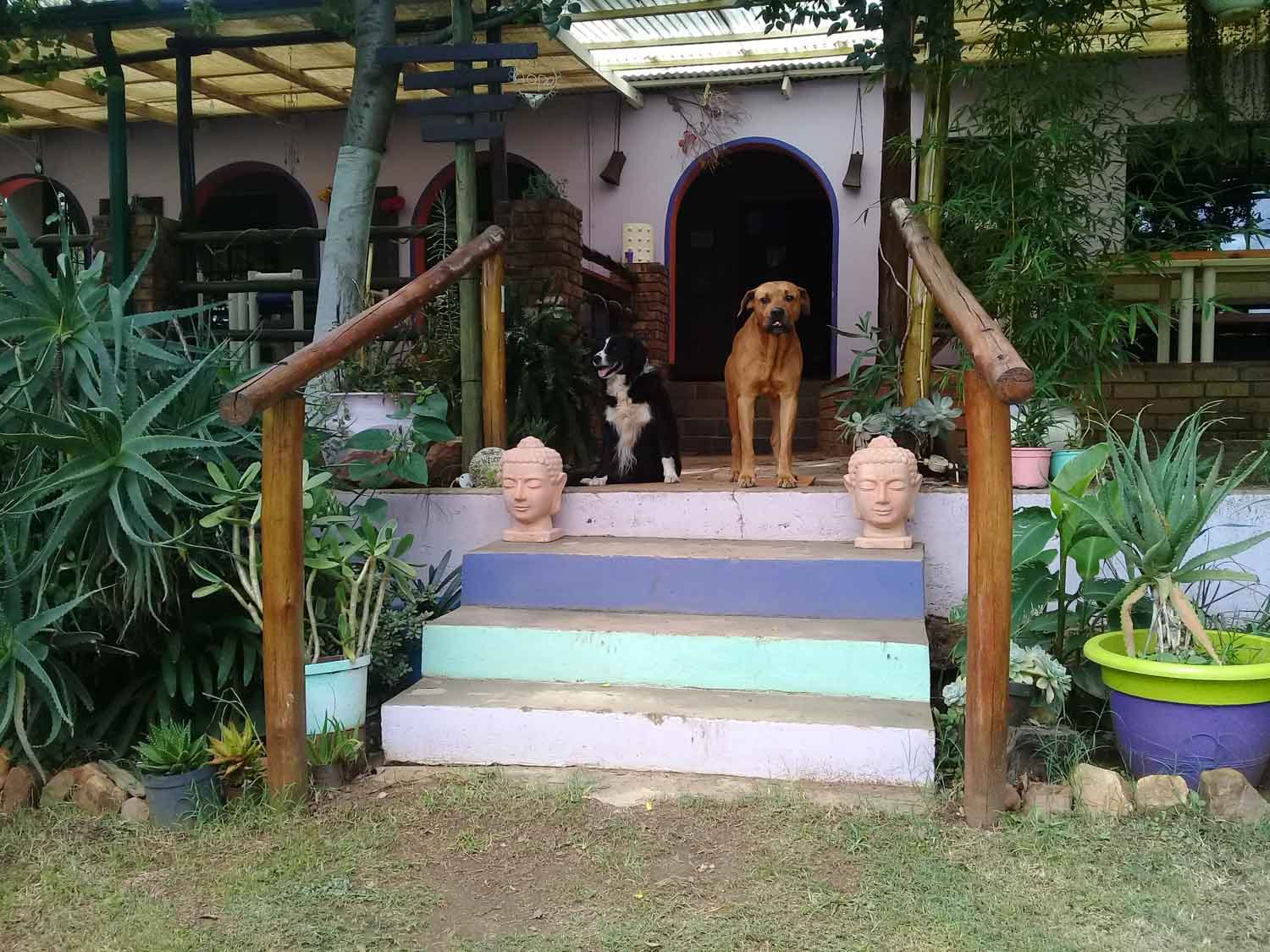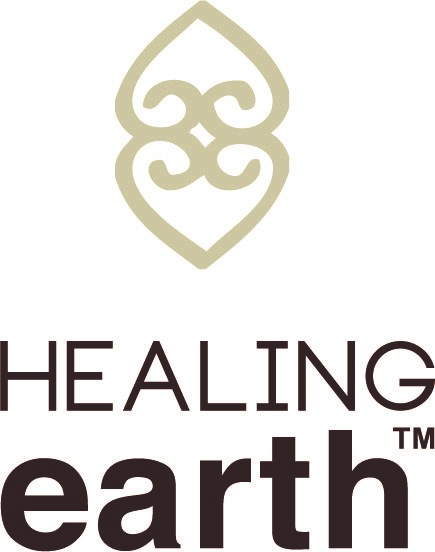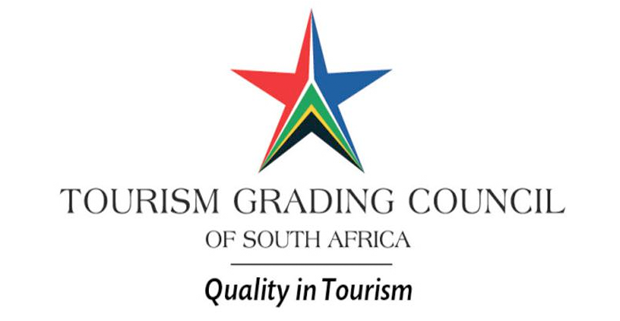








































































Asking Price: ZAR 3,500,000
About the Ancient Ruins:
All the stone ruins are circular and are not stand-alone structures. They are part of a very large cluster of ruins, all connected to each other by strange channels, that may resemble pathways in aerial photographs. Agricultural terraces seem to hold all of these ruins and channels together like a gigantic spider’s web. This is an unimaginable building achievement comprising of more than 10 million stone ruins, that cover large parts of mostly South Africa and Zimbabwe. The Great Zimbabwe ruins fall into this same group of ruins.
A large cluster of Ruins
Few people are aware that Southern Africa is the home of the largest concentration of ancient ruins found anywhere on Earth – dating back over 200,000 years. This is the staggering discovery made by scientist and explorer Michael Tellinger in 2008. Since then, thousands of people from all over the world have visited the ruins and museum, and the interest is growing rapidly as people are discovering the mysterious vanished civilisations that are forcing us to revrite our history books
Before Egypt
Long before the Egyptians or Sumerians saw the light of day, an ancient vanished civilisation lived at the southern tip of Africa. They worshiped the Sun, they carved the first Sphinx and Horus Bird, left behind mysterious rock art and carvings. They built an ancient megalithic calendar (Adam’s Calendar), aligned with Orion, and they were obsessed with gold.
Archaeological finds connect these ruins to ancient civilisations like the Egyptians, Phoenicians, Dravidians, Mayans, Romans, Greeks and the Anunnaki deities of the Sumerians. Stone Circle ruins and Museum is an unforgettable treat for those who seek deeper knowledge and truth about our human origins. For those who have been to places like Stonehenge, The Giza Pyramids or Machu Pichu; the Stone Circles of South Africa will complete your journey.
Few people are aware that Southern Africa is the home of the largest concentration of ancient ruins found anywhere on Earth – dating back over 200,000 years. This is the staggering discovery made by scientist and explorer Michael Tellinger in 2008. Since then, thousands of people from all over the world have visited the ruins and museum, and the interest is growing rapidly as people are discovering the mysterious vanished civilisations that are forcing us to rewrite our history books.
Advanced Ancient technology
The mysterious tools and artefacts, such as the torus stones and cone-shaped tools indicate that this civilisation had an advanced knowledge of the laws of nature, because they used Sound & Frequency as a tool – this is why we call this the first Silicone Valley.
Advanced Ancient healing
The Stone Circles themselves emit high levels of sound frequencies; magnetic fields; and electro-magnetic energy – sharing this energy with other stone circles in the entire grid. Since 2008, we have had repeated reports from a large number of visitors, of healing from all kinds of disease – including full blown cancer. The Stone Circles seem to act as healing chambers by amplifying the natural frequencies of the Earth and harmonising with our bodies.
Discovery of the Stone Circle Ruins
Until 2007, very little was known about the ancient ruins and almost no visual material was available. All the information came from books and explorers from the late 1800s and early 1900s. A few archaeological papers were written between the 30s and 90s. Some of these showed strange drawings of the ruins showing circles with no doors and entrances – concluding that while some of the ruins had been used as dwellings by more recent occupants, the original structures were built at a much earlier stage and had no doors or entrances. Therefore, the original structures were NOT constructed as dwellings for people or animals such as cows – as is often quoted inaccurately by some scholars.
Adam's Calendar
Adam’s Calendar, is most likely the most significant and oldest archaeological site in South Africa and possibly the world. It is the oldest working example of sun calendar. This site is known by African Shamans as “Inzalo Yi’langa” or “Birthplace of the Sun”, where humanity was created by the gods. Sacred ceremonies were held at this site for thousands of years that ended sometime in the 1950s. It is aligned with Great Zimbabwe and the Giza Pyramids along 31deg East. Current estimate of age is around 250,000 years old or more – close to the accepted origins of humankind.
Giant Footprint
Visit this spectacular site that reminds us of a strange and mystical time on Earth, when there were giants. All ancient cultures including the Bible tell us that there were giants in ancient times. Somehow, this flies in the face of Eurocentric historians today, who are constantly negating this ancient knowledge. A visit to this spectacular site will allow you to consider this for yourself.
Accommodation
We have stylish stone cottages with queen beds and on-suite shower – Beautiful comfortable rooms in the very spacious guest house, with full kitchen and relaxing area – two of these rooms have on-suite bathrooms. We can accommodate backpackers or larger groups in two dorms that sleep six each. All in the company of well-travelled, well informed, and conscious owners. Sundowners on the river deck and breath-taking bike & hiking trails – explore the spectacular mountains & valleys. Cool of in the streams and waterfalls while rediscovering our ancient past.
Food
STONE CIRCLE COUNTRY KITCHEN
BREAKFAST – LUNCH – DINNER
Enjoy our fabulous country cooking made with love and veggies from our very own garden by a world-class chef. Have drinks or picnics by the river with mountain views and sundowners on the river deck. Our menu ranges from the basic to the jaw-dropping… always delicious and remarkable.
Tours
Walk among the Ancient Ruins of South Africa
Take a walk among the largest cluster of ancient stone ruins anywhere in the world. Discover the TRUE CRADLE OF HUMANKIND – now recognised as such by a growing number of researchers from around the world. Experience the deep mystery and find the true purpose of these ancient ruins – that were not dwellings for people, nor for animals.
Marvel at the sheer magnitude of work that went into constructing more than 10 million Stone Circles throughout southern Africa – constructed by a civilisation we knew nothing about, until the ground-breaking research of Michael Tellinger exposed it all in 2008.
For individuals, families, small groups and large groups. Check in at our Lodge – relax, see the museum – walk the labyrinth and absorb new knowledge – let us plan the perfect tour for you to match your level of interest and curiosity.
Museum
The Stone Circle Museum, is the only museum dedicated to showcasing the ancient ruins and vanished civilizations of Southern Africa – Dravidian presence – Ancient gold mines – Precious tools and artefacts – Stones that ring like bells – Advanced tools and technology – And the presence of the Anunnaki in what was referred to as the ABZU in the Sumerian clay tablets.
The existing Stone Circle Museum was launched in 2008 by Michael Tellinger and displays thousands of unique and priceless tools and artefacts connected to the vanished civilization of southern Africa. More than 10 million mysterious stone circle ruins lie scattered across South Africa, Zimbabwe and surrounding countries – including Great Zimbabwe. These ruins are surrounded by 450 thousand square kilometers of agricultural terraces in what is now recognized as the largest concentration of stone ruins found anywhere on Earth.
The stone ruins, terraces and artefacts are being destroyed at a rapid rate by forestry, farming, town and road construction. No effort for preservation is made by authorities. This is the only museum dedicated to the preservation of this knowledge, ongoing research, and preserving the precious artefacts while spreading awareness of this astonishing part of human history, that takes us closer to the origins of Humankind than ever before.
Latest Discovery
Fossils of GIANTS, dinosaurs, humanoids and other extinct creatures that were present during the stone circle era as recently as 12,000 years ago – possibly even Anunnaki fossils. Fossilized heart, ribs, fingers, hooves, claws shoulder blade, teeth, leg bones, jaw bone 20 times larger than human, bone knuckles of giants over 100m tall;’ reptilian and dinosaur skin, and many more mind-blowing displays.
This discovery indicates that this entire area was caught up in a titanic flood that deposited several metres of mud and covered this entire area of southern Africa.
Annunnaki Connection
There is evidence that this was the creation of the Sumerian deities known as the ANUNNAKI. This is echoed in ZULU oral tradition and shamanic knowledge passed down over thousands of years. The ZULU story tells us that ADAM’s CALENDAR is where humanity was created by the gods (ANUNNAKI) to be slaves in the gold mines. Zulu Shaman Credo Mutwa was initiated there in 1937 and the site was used for rituals and ceremonies until the 1950s. The area of Waterval Boven and Machadodorp in Mpumalanga province, South Africa, is the most densely populated stone circle area found to date.
Waterval Boven
Waterval Boven (officially known as Emgwenya) is a small town situated on the edge of the Escarpment on the banks of the Elands River above the 75m Elands Falls on the railway line from Pretoria to Maputo in Mpumalanga, South Africa. Hence the name, which is Dutch for "above the waterfall".
It is the sister town of Waterval Onder which is at the base of the Escarpment below the waterfall. Both settlements were established in 1895 because of the building of the Pretoria - Delagoa Bay railway line, built by the Netherlands-South African Railway Company (NZASM).
Mpumalanga
Mpumalanga (/əmˌpuːməˈlɑːŋɡə/) is a province of South Africa. The name means "East", or literally "The Place Where the Sun Rises" in the Swazi, Xhosa, Ndebele and Zulu languages. Mpumalanga lies in eastern South Africa, bordering Eswatini and Mozambique. It constitutes 6.5% of South Africa's land area. It shares borders with the South African provinces of Limpopo to the north, Gauteng to the west, the Free State to the southwest, and KwaZulu-Natal to the south. The capital is Mbombela. Mpumalanga was formed in 1994, when the area that was the Eastern Transvaal was merged with the former bantustans KaNgwane, KwaNdebele and parts of Lebowa and Gazankulu. Although the contemporary borders of the province were only formed at the end of apartheid, the region and its surroundings has a history that extends back thousands of years. Much of its history, and current significance is as a region of trade.
History
Precolonial Era
Archeological sites in the Mpumalanga region indicate settlement by humans and their ancestors dating back 1.7 million years. Rock paintings, engravings and other archeological evidence throughout the province indicate that Mpumalanga has a long history of human habitation by groups of hunter gathers. Excavations not far from the Mpumalanga border in the Origstad district, show evidence of Middle Stone Age habitation dating back to 40,000 years ago. The Lion Cavern, in Ngwenya on the Eswatini border, shows evidence of people mining iron ore in the Mpumalanga region and surrounding areas from at least 28 000 years ago. Evidence from mine shafts and trade goods shows that there was notable industry in tin, copper, gold, iron, ochre, and bronze. The Lydenburg Heads, from around 500 CE, are Africa's oldest Iron Age artworks south of the equator were found in Mpumalanga. Evidence from a site near Mbombela shows evidence of agricultural societies from between the 6th to 17th century. Bokoni stone-walled sites on the Mpumalanga highveld are indicative of a large precolonial agropastoral society between ~1500 and 1820 CE. These societies became centers of trade, with increasingly large and centralised populations, a pattern that increased as they connected to the Portuguese trading post in Maputo Bay. In this era, groups that would become the Swazi, Pedi, Ndebele, Mapulana and others established themselves in the area that is now Mpumalanga.
Colonial Era
In 1845, as part of the Great Trek, the first Dutch-speaking colonial settlers arrived in what they called the eastern Transvaal. The rest of the 19th century in the region was characterised by colonial encroachment and conflict over land and political control. In 1852, the Boers established the South African Republic. The well established Pedi, Swazi and Zulu kingdoms put up significant resistance against the settlers. The Pedi fought wars with the Boers in 1876 (see Sekhukhune Wars) and the Zulu fought with British settlers in 1879 (see Anglo-Zulu War). These interconnected conflicts played a role in shifting the balance of power in southern Africa to colonial control. After 1860, missionaries, especiailly German missionaries like Alexander Merensky set up mission stations in the region, spreading Christianity and European values. Just as the region had been a center for trade in the precolonial era, in the colonial era, the Eastern Transvaal region became an important thoroughfare for trade between Johannesburg and Delagoa Bay (now Maputo). Gold mining around areas like Pilgrims Rest and Barberton and farming were the main forms of economic activity. On farms in the Transvaal, under a system known as Inboekstelsel, Boers carried out raids to capture children and forced them into indentured labour. During the South African War, the region was the site of notable battles.
Apartheid
When the National Party came to power in 1948, their policy of apartheid intensified the segregation that had defined communities in the Transvaal. Under a policy of forced removals, Black South Africans were evicted from areas reserved for white people and moved into homelands, including KaNgwane, KwaNdebele, Lebowa and Gazankulu. As the apartheid regime implemented oppressive policies that defined almost every aspect of life, activists responded with resistance. In 1959, the small town of Bethal on what is now the Mpumalanga highveld was the center of the anti-apartheid consumer potato boycott in response to the working conditions Black South African labourers faced on farms in the area. The region was influenced by dynamics in exile and elsewhere in the country, for instance Black Consciousness, the Sharpeville Massacre and the 1976 Soweto Uprisings. In the 1980s, under intense repression, youth and labour organizations moblized against the government and townships and Bantustans erupted in political unrest and violence. In 1986, an avoidable disaster killed 177 mine workers in Kinross Mine in the region's highveld. The response to the disaster by the National Union of Mineworkers was a key point in the South African labour struggle. By the late 1980s, the intensity of resistance across South Africa (including areas like Mpumalanga, which hadn't previously been seen as key areas of resistance) combined with economic factors and international pressure was strong enough to end apartheid. On 27 April 1994, when South Africa held its first democratic elections, Mpumalanga province was formed. It was originally called the "Eastern Transvaal" province, but the name was later changed to Mpumalanga on the 24th of August 1995.
Post-apartheid
The liberation movement turned leading party, the African National Congress (ANC) came into power in Mpumalanga after white minority rule ended. A program of land redistribution, aimed at granting land back to the black communities who were forcibly moved during apartheid, had redistributed tens of thousands of hectares to these communities and their descendants. However, the process has been marked by corruption, controversy and has been seen as inadequate to address the extent of apartheid spatial planning. In 2001, 1,270 hectares of the Boomplaats farm near Mashishing was the first farm in South Africa to be expropriated. The post-apartheid era brought significant economic growth to Mpumalanga including notable progress in extending housing and basic services. However, poor governance, corruption and high levels of wealth and income inequality present persistent challenges to the province.
Geography
The Drakensberg escarpment divides Mpumalanga into a westerly half consisting mainly of high-altitude grassland called the Highveld and an eastern half situated in low-altitude subtropical Lowveld/Bushveld, mostly savanna habitat. The southern half of the Kruger National Park is in the latter region. The Drakensberg exceeds heights of 2000 m in most places, with this central region of Mpumalanga being very mountainous. These regions have alpine grasslands and small pockets of Afromontane forest. The Lowveld is relatively flat with interspersed rocky outcrops. The Lebombo Mountains form a low range in the far east, on the border with Mozambique.
Some of the oldest rocks on earth have been found in the Barberton area; these ancient greenstones and metamorphosed granites form the Crocodile River Mountains in the southeast of the province. The Lowveld is underlaid by African Cratonic Basement rocks of ages in excess of 2 billion years. The Highveld is mostly Karoo Sequence sedimentary rock of a younger, Carboniferous to Permian age.
Mpumalanga is the only South African province to border two provinces of Mozambique (Gaza Province to the northeast and Maputo Province to the east), as well as all four regions of Eswatini (Lubombo, Hhohho, Manzini, and Shiselweni Districts).
Climate
The Lowveld is subtropical, due to its latitude and proximity to the warm Indian Ocean. The Highveld is comparatively much cooler and drier, due to its elevation of 1700 m to 2300 m above sea level. The Drakensberg escarpment receives the most precipitation, with all other areas being moderately well-watered by mostly-summer thunderstorms. The Highveld often experiences considerable freezing, while the Lowveld is mostly frost-free. Winter rainfall is rare, except for some drizzle on the escarpment. The differences in climate are demonstrated by comparing the capital, Mbombela, which is in the Lowveld, with Belfast, which is an hour away on the Highveld:
With climate change in the province, rainfall is becoming more variable, temperatures and evaporation rates are rising and extreme weather events are becoming more frequent. It is predicted that these changes will shift biomes so that most of the province will be savanna.
Ecology
Some of the earliest signs of life on Earth have been found in Mpumalanga. In the Makhonjwa mountain range's greenstone belt near Barberton, a fossil layer shows microbial activity that is 3.22 billion years old. This discovery indicates that life emerged on Earth 300 million years earlier than previously thought.
Mpumalanga has a high plant and animal diversity. Many species are endemic to the province.
Cliff Jacobs (Nat Dpl Hotel Man (UJ). MPRE. GA Level 5 TEFL) Managing Principal / CEO Exquisite Hotel Consultants (Pty) Ltd Mobile: +27 (0) 84 413 1071 / +27 (0) 61 716 6951 Email: cliff@exquisitehotelconsultants.com Web: https://www.exquisitehotelconsultants.com © All rights reserved Terms and Conditions apply Scroll down to view our Hospitality Properties and Businesses for sale or lease or lease-to-buy or partnership arrangement or management agreement arrangement.



 Name: BondExcel
Name: BondExcel Mortgage Origination
We interface with all of the major banks in South Africa to ensure that you get the right home loan solution at the best possible rate.
Looking forward to assist you with your home loan application!
 Name: Businessentials For Hospitality
Name: Businessentials For Hospitality Hospitality Consulting, Accounting, Bookkeeping and Payroll Services
 Name: Capital Efficiency Group
Name: Capital Efficiency Group Corporate Finance, Tax & Accounting and Treasury Services.
Attorneys, Notaries and Conveyancers
 Name: D E I R D R E R E N N I E R S Interior Design
Name: D E I R D R E R E N N I E R S Interior Design Interior Design
 Name: De Leeuw Valuers Cape Town
Name: De Leeuw Valuers Cape Town Property Valuation Services
 Name: E C Mobility
Name: E C Mobility International property, law and immigration
 Name: Edward Tokolo Kasete
Name: Edward Tokolo Kasete Real Estate Specialist - Our Associate in Namibia
We offer an international platform of specialist hospitality property and/or business brokering services by listing and marketing for sale or lease or by investment partner arrangement or management agreement arrangement of a variety of hospitality products (i.e. hotels, resorts, boutique hotels, guest houses, guest lodges, B&Bs, game resorts, wine farms, yachts, cruise liners, etc) through our association with EC Mobility (in Portugal and Spain), BON Hotels (Africa), Giovanni Conti (Italy, North and East Africa, Sri Lanka), Nuno Boquinhas (Portugal, Azores, Madeira, Mozambique), Property 24, Seeff Property Services, Harcourts, Realnet, RE/MAX, Dogon Property Group, Rawson Estates, among many other prominent commercial estate agencies throughout Southern Africa - and now we are entering other African Countries on the East and West Coasts of Africa and moving further abroad! To date, Exquisite Hotel Consultants has a presence in over 80 countries - and counting...
Working with the above-mentioned agencies and others provides the largest possible reach nationally and internationally for all prospective buyers and sellers wishing to enter or exit the Hospitality Industry.
Sister websites have been opened in the following countries: United Kingdom: see www.exquisitehotelconsultants.co.uk, and in Germany: see www.exquisitehotelconsultants.de, and in the United States of America: see www.exquisitehotelconsultants.us.
Please note that several of our hospitality properties and/or businesses for sale or lease or through business partnership arrangements or management contracts are officially "Off-Market" - mainly for privacy reasons. Therefore, they are not listed as part of our hospitality properties/businesses for sale or lease stock. Please contact me for further details.
Should you be considering to sell or buy or lease or obtain a partnership arrangement or management agreement arrangement for your hotel, boutique hotel, resort, guest house, B&B, game lodge, game resort, guest farm, yacht or cruise liner etc, I would be most pleased to provide you with further details of our way of working to effectively market and sell your property(ies) and/or business(es).
 Name: Electrolux Professional
Name: Electrolux Professional Food Service, Beverage and Laundry Solutions
Electrolux Professional is a leading global provider of foodservice, beverage and laundry solutions, serving a wide range of customers globally, from restaurants and hotels to healthcare, educational and other service facilities.
 Name: Exquisite Hotel Consultants' Hospitality Training Department
Name: Exquisite Hotel Consultants' Hospitality Training Department Learn to speak Hotel English (one-to-one online course)
Our TEFL trained tutors teach the following functions
The course consists of 21 lessons (4 to 5 one-hour lessons per month).
 Name: FVE Interiors
Name: FVE Interiors Interior Design
 Name: Healing Earth
Name: Healing Earth Hotel Amenities - inspired by Africa
 Name: Hospro
Name: Hospro Hospitality Consultancy and Procurement
 Name: Hotel Revenue Management
Name: Hotel Revenue Management Revenue (yield) Management
Online room inventory Distribution & Rates optimisation
Implementation of Best Available Rate (BAR), in conjunction with point 1 & 2
 Name: Indigo Real Estate Agency
Name: Indigo Real Estate Agency Real Estate Agency - Our Associate in Mozambique
 Name: Lisa Dunn - Tourism Grading Assessor
Name: Lisa Dunn - Tourism Grading Assessor Tourism Grading Assessment
 Name: Ooba (Pty) Ltd
Name: Ooba (Pty) Ltd Mortgage Origination
ooba offers you:
 Name: SK Sambu Tours & Transfers
Name: SK Sambu Tours & Transfers Johannesburg based Tours & Transfers Operator
We look forward to being of service to you.
Kind regards
King Sambu
 Name: Soul Private Collection
Name: Soul Private Collection Hotel Management and Marketing
 Name: The Dumb Butler Hospitality Suppliers
Name: The Dumb Butler Hospitality Suppliers Hotel Linen Suppliers
LUX Award Winners 2021 for The Best Hospitality Suppliers. We are a proudly South African brand established in 2006.
We Supply:
 Name: The High Street Auction Company
Name: The High Street Auction Company
Property Auctioneers
Appreciating Property Value
 Name: Touch Point Retail
Name: Touch Point Retail Smart Interior Design
Cliff Jacobs (Nat Dpl Hotel Man (UJ). MPRE. GA Level 5 TEFL) Managing Principal / CEO Exquisite Hotel Consultants (Pty) Ltd Mobile: +27 (0) 84 413 1071 / +27 (0) 61 716 6951 Email: cliff@exquisitehotelconsultants.com Web: https://www.exquisitehotelconsultants.com © All rights reserved Terms and Conditions apply Scroll down to view our Hospitality Properties and Businesses for sale or lease or lease-to-buy or partnership arrangement or management agreement arrangement.